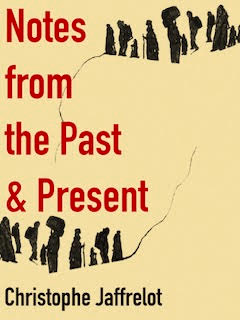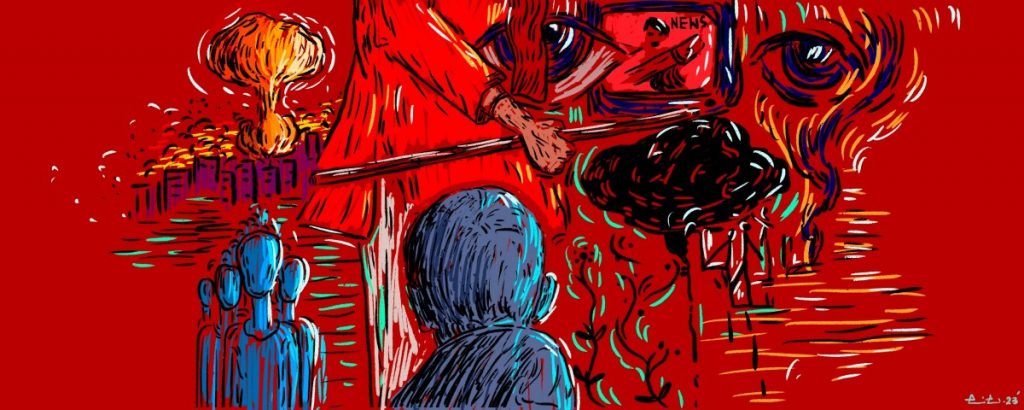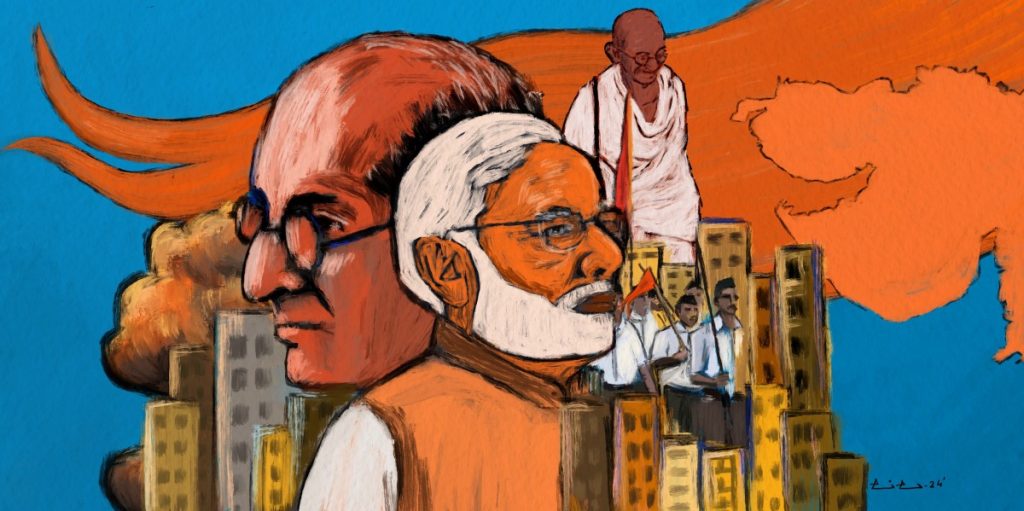How Does India See Its Muslim Population?
Every five years, the Lok Sabha elections offer a window to analyse the representation of the Muslim minority in the parliament of India. From that point of view, the 2024 elections have reconfirmed a structural trend as the share of Muslim members of parliament further eroded, dropping from 4.6% in 2019 to 4.4%. Muslims represented 14.5% of the Indian population in the 2011 census.
No Muslim candidate has been elected, not only among those – very few – nominated by the Bharatiya Janata Party, but also among those (equally small in numbers) who had been given a ticket by its NDA allies.
On the opposition side, the situation is different but Muslims are still under represented by almost half since only 7.9% of the INDIA Lok Sabha members come from India’s largest minority. It is also important to note that, in contrast to the government that had been formed in 2019 which had one Muslim MP – Mukhtar Abbas Naqvi, a Rajya Sabha Member – there’s none this time.
How far can we explain this invisibilisation by the general perception of this minority by the Hindu majority?

Illustration: Pariplab Chakraborty.
And how are Muslims assessing their own situation and perceiving their community as well as its leaders?
These are the question this column addresses on the basis of a survey commissioned in the framework of the Henry Luce Foundation-funded 'Indian Muslims Project'. This project, initiated in 2020 by scholars of Sciences Po, Princeton University and Columbia University, includes about 50 researchers from India, the US and Europe. The study was conducted by the CSDS from March 28 to April 8, 2024 as part of its National Electoral Study in 400 polling stations spread across 100 assembly constituencies in 100 parliamentary constituencies. It achieved a sample of 10,019 respondents spread across 19 states of India – Andhra Pradesh, Assam, Bihar, Gujarat, Haryana, Karnataka, Kerala, Madhya Pradesh, Maharashtra, Odisha, Punjab, Rajasthan, Tamil Nadu, Uttar Pradesh, West Bengal, Delhi, Jharkhand, Chhattisgarh and Telangana. The sampling design adopted was multi-stage random sampling. This procedure ensured that the selected sample was fully representative of the cross-section of voters in the country.
The survey is revealing of a fair degree of anti-Muslim prejudice among Hindus. 27 % of the latter “fully” or “somewhat” consider that Muslims are not as “trustworthy as anyone else”. Among Hindu Dalit and Hindu Adivasi respondents (as classified by the survey) respectively 28.7% and 31% share these views. But the most significant faultline is geographical rather than social: only 13% of the south Indian respondents “fully” or “somewhat” disagree with the idea that Muslims are as “trustworthy as anyone else”, against 27% in the Hindi belt and 20% in the West.
Similarly, 26% of the Hindus interviewed “fully” or “somewhat” disagree with the idea that Muslims are as “patriotic as any Indian”. Again, Hindu Dalits and Hindu Adivasis are more prejudiced than other Hindus, at respectively 30% and 28.5% (against 24.3% for 'upper' caste Hindus). And again the gap between the North and the South is very significant: only 18.1% of the south Indian respondents “fully” or “somewhat” disagree with the India that Muslims were as patriotic as any Indian, against 28.1% in the Hindi belt and 21% in the West.
This perception harks back to an old idea that Muslims are unduly favoured.
A very large proportion of the Hindu voters who have been interviewed, 47%, “fully” or “somewhat” agree with the idea that Muslims are “unnecessarily appeased or pampered” – even though all the available data demonstrate that Indian Muslims are undergoing an impoverishment process and are marginalised on the job market and the housing market, as well as in the educational system (at least in the North and the West). A consensus seems to prevail here also from the point of view of caste and communities: Dalits and Adivasis are only slightly less inclined to share this view (at 43.4% and 43.5%) than the 'upper' castes and the upper OBCs – at 46.8% and 49.9%.

Illustration: Pariplab Chakraborty
This viewpoint explains that a substantial fraction of the Hindus – 22 % – consider that “only Hindus” should benefit from reservations. By contrast, 71% of Muslims think that Hindus and Muslims should get access to this form of positive discrimination. However, when the question is more specific and the interviewees asked should both Hindus and Muslims be given reservations in the Scheduled Castes category – a majority of Hindus and Muslims agree (among the Hindu Dalits, only 28.1% don’t), a clear reflection of an idea that Muslim Dalits, at least, are not “pampered” and need as much support as other Dalits.
The fact that, according to the Hindu respondents, nothing special has to be done for the other Muslims reflects their assessment of the general condition of this minority: 60 to 68% of the Hindu respondents, according to the caste group, think that Muslims are not “treated unfairly by the state authorities”. By contrast, 43 % of the Muslim respondents think otherwise.
This is largely related to a deep sense of insecurity: 53.8 % of the Muslim respondents consider that they are not “as safe as any other citizen in the country” and 11% of them say that they are “not safe at all”. This perception stands in stark contrast with those of the Hindus – whatever their caste – who appear in a rather complete denial of the Muslims’ condition: 60 to 62% of them claim that Muslims are equally safe.
Hindus are expressing these views despite the fact that they interact less with Muslims than with people of other communities: only half of the Hindu respondents have “a friend who is a Muslim” – caste making no difference here either. This proportion is still smaller in the Hindi belt, in spite of the size of the Muslim population in UP. Only 50.6% of the Hindi belt respondents have a friend who is a Muslim when 65.9% of the south Indian respondents do.
Another paradox needs to be highlighted: the Hindu respondents argue that Muslims are not treated differently than others, are not unsafe and are even pampered or appeased, but they admit that Muslims are not properly represented in the political sphere – and they attribute this problem to some lack of leadership. There are more Hindu respondents who consider that “the absence of serious and committed leaders among Muslims affects their representation in politics” than Hindu respondents who think otherwise – whatever the caste group. An even larger proportion of Muslims – 50.2% – think alike.
In the same vein, 52% to 54% of the Hindu respondents consider that “There is a need for better and articulate Muslim leaders in India”, a view shared by 81.1% of Muslims, but, at the same time, 61.8% of the Muslim respondents consider that “the Muslim community has able, honest and committed leaders” (it simply needs to have more), something the Hindu respondents deny: there are more Hindu respondents who think that Muslims don’t have such leaders than respondents who think otherwise, irrespective of caste. The contrast between the Hindi belt and the South, here, is complete: while 38.1% of the Hindi belt respondents think that the Muslim community does not have “honest and committed leaders” (against 27.6% who think that it does), 48.9% of the South Indians consider that the Muslim community has such leaders (against only 24.3% who think that it doesn’t).
Many Muslims attribute their situation to the leaders of the community themselves: 50% of them report that absence of serious leaders amongst Muslims affects their representation. 64% of the Muslim voters interviewed stand in full agreement to need for more articulate Muslim leaders. However, 62% also feel that they have committed leaders – but they are too few.
The data we have analysed so far reflect the growing polarisation of the Indian society, a process that is more pronounced in the Hindi belt than in the rest of the country. To put it in a nutshell, Muslims feel more and more insecure and unfairly treated when Hindus consider that not only are they as secure as others and treated the same way as others – even pampered and appeased – but (here there is a contradiction) that their plea – which, therefore, is not so good – reflects a lack of leadership and justifies some reservations (at least for Dalit Muslims).
Most of the items reviewed so far have not revealed any significant difference due to the social background of the Hindu respondents.
This communal polarisation of the Indian society stems from the rise to power of the Bharatiya Janata Party whose discourse systematically demonises the Muslims. But it also results from the groundwork of the Sangh Parivar at the societal level, a strategy of mobilisation that has found expression in the Ram Janmabhoomi movement for decades. A majority of the Hindu respondents, precisely, consider that the construction of the Ram temple “helped in consolidating the Hindu identity”. Interestingly, 59% of the 'upper' caste Hindus share this view, against 46.7% of the Hindu Dalits only. This view is also more popular in the Hindi belt than in the South: 49.4% against 43.8%.

Illustration: Pariplab Chakraborty
While the very idea of consolidating the Hindu identity went together with the notion of polarisation and majoritarianism, a majority of the Hindu respondents do not consider that the Ayodhya movement has further divided society. In fact, the percentage of Hindu respondents who say that the building of the Ram temple will “foster harmony between Hindus and Muslims” is larger than the percentage of those who consider that it will “increase differences among communities”. Note that the gap is larger among the 'upper' castes (35.% against 19.1%) than among the Dalits (25.6% against 23.4%).
These data can be interpreted as the reflection of a clear denial of reality. But one may also see it as the sign of a certain attachment to the coexistence of different communities. This reading is virtually substantiated by the fact that in our survey only a small minority of Hindus – 10 to 16 % of the total according to caste groups – consider that “India belongs only to Hindus”, a huge majority of the Hindu respondents – between 74% and 80% – saying that the country “belongs to citizens of all religions”.
More importantly, about 50% of the respondents – caste and religion making no difference – declare that “leaders from other religions can also effectively represent [their] interests and concerns”. In the same vein, there are more respondents – between 39.4% and 50.5% according to their caste group – who say that they will contact a leader of a different religion or a leader from their community the same way to get their work done, if the two leaders belong to the same party and are equally competent, than a respondent who declares that they will contact a leader from their community first. But geography makes a big difference here too: while only 24.5% of the South Indian respondents would prefer a “leader from the same religion”, they are 40.7% in the Hindi belt! Similarly, while 61% of the South Indians consider that “leaders from other religions can also effectively represent [one’s] interests and concerns”, only 45.8% of those of the Hindi belt think alike.
Another contrasted piece of information may be found in the responses to the question: does your “vote affect how things are run in this country?” While 63.3% of the 'upper' caste Hindus share this view, only 51.3 % of the Muslims (the lowest proportion) do. This difference is reconfirmed by data on voter turnout. Certainly, the proportion of Muslim citizens who voted in 2024 has increased from 60% in 2019 to 62%. But since 2014, it is much lower than the overall turn out – whereas it was above the national average in the late 1990s. In 1999, 67% of the Muslims who were allowed to vote did so, when the overall turnout was only 60%. Many more Muslim potential voters abstain today, as if they had lost faith in the electoral process.
Christophe Jaffrelot is research director at CERI-Sciences Po/CNRS, Professor of Politics and Sociology at King’s College London and Non Resident Fellow at the Carnegie Endowment for International Peace. His publications include Modi’s India: Hindu Nationalism and the Rise of Ethnic Democracy, Princeton University Press, 2021, and Gujarat under Modi: Laboratory of today’s India, Hurst, 2024, both of which are published in India by Westland.
This article went live on November eighteenth, two thousand twenty four, at zero minutes past seven in the evening.The Wire is now on WhatsApp. Follow our channel for sharp analysis and opinions on the latest developments.




